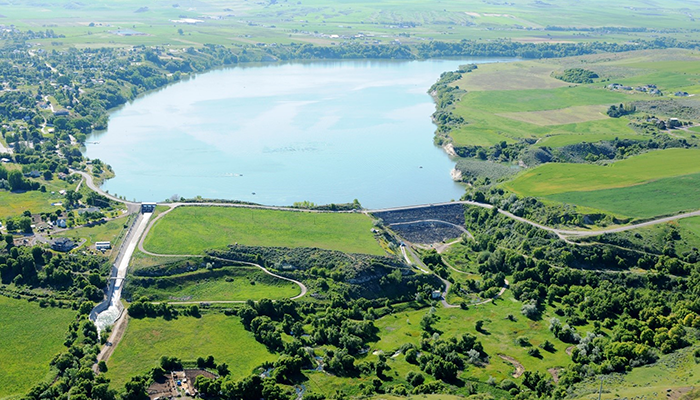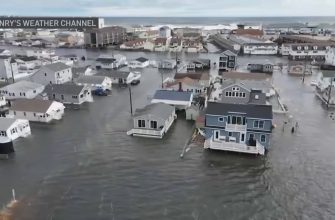HYRUM, Utah (ABC4) – The Bureau of Reclamation said it will be closing the spillway gates at Hyrum Reservoir and allow the reservoir to begin filling for the irrigation season.
Officials said the reservoir, which sits along the Little Bear River in northern Utah around nine miles southwest of Logan, currently has about 15% of space remaining to be filled after Utah’s historic runoff.
The Bureau of Reclamation originally opened the dam’s spillway and began constant monitoring in early May. This was in response to the high volumes of water that needed to be released from the reservoir through the spillway, due to a record runoff from an unprecedented Utah winter season.
Aging infrastructure at the spillway reportedly raised some concerns, and crews were on constant standby with heavy equipment and riprap material in case the spillway needed emergency repairs.
“We had a forecasted record runoff of 238% of average, requiring dam operators to pass high volume of water through the spillway,” said Reclamation Regional Director Wayne Pullan. “Reclamation was prepared to take immediate action if the spillway, which is nearly 90 years old, needed emergency repairs. Fortunately, that didn’t happen. Now the reservoir is filling, and irrigation deliveries are being made to water users.”
Hyrum Reservoir reportedly has a projected runoff of 86,000 acre-feet between April and July. About 76,200 acre-feet have come from this spring alone. As of June 5, the reservoir’s elevation was at about 4667.5 feet and the end-of-day storage was recorded at 12,468 acre-feet, or about 85%.
The Bureau of Reclamation said the inflows measured from the Little Bear River have begun to decrease and are currently averaging about 268 cubic feet per second. The flow is considerably lower from its mid-May peak of 1,290 cubic feet per second.
The high water flows are courtesy of Utah’s winter snowpack. This past winter, the snow water equivalent peaked at the start of April with a record-breaking 30 inches. Utah’s weather has since taken a sharp rise in temperatures, beginning near the end of April. As of June 6, Utah is left with about 1.9 inches of snow water equivalent left in its mountains.
According to the Utah Department of Natural Resources (DNR), 95% of Utah’s water comes from its snowpack and through the snow water equivalent. The extended Utah drought has depleted the state’s reservoirs and, while this winter has provided some relief, it will take multiple years of above-average snowpack to reverse the drought’s impacts.
“Since we don’t know when another wet year like this will come along, and more of the state remains in drought, we need to unite and focus on reducing water use so we have enough in the future,” warns DNR. “By continuing to conserve – and finding new ways to stretch the supply – we’ll become a more drought-resilient state.”
Utah DNR provides resources for farmers, residents, and municipalities to learn more about how to use water more efficiently on farms, around the house, and in land planning among others.









